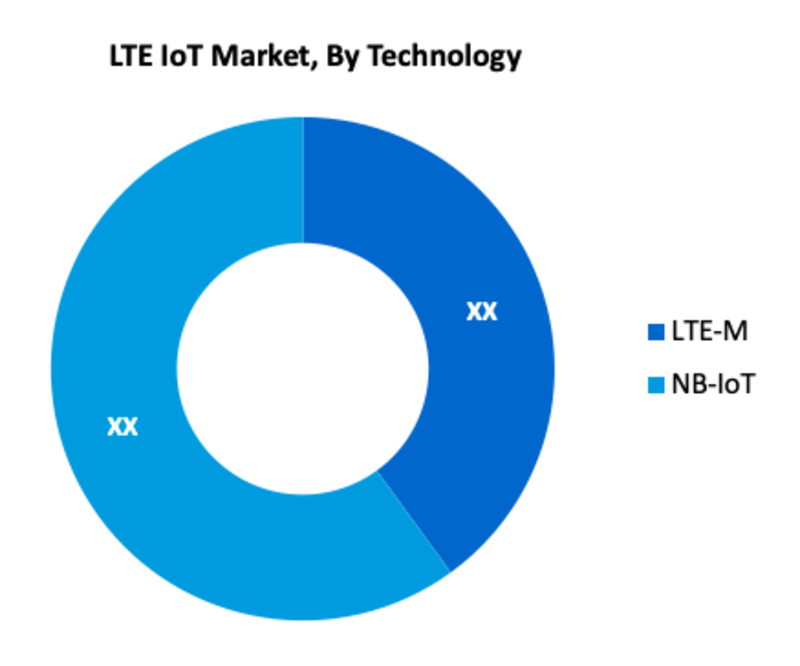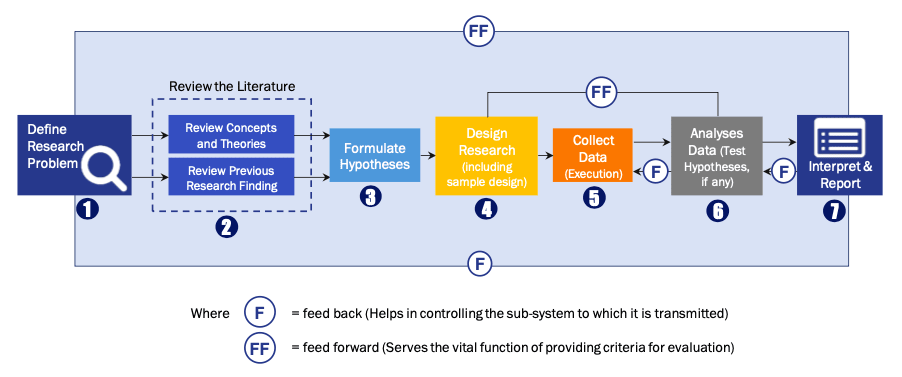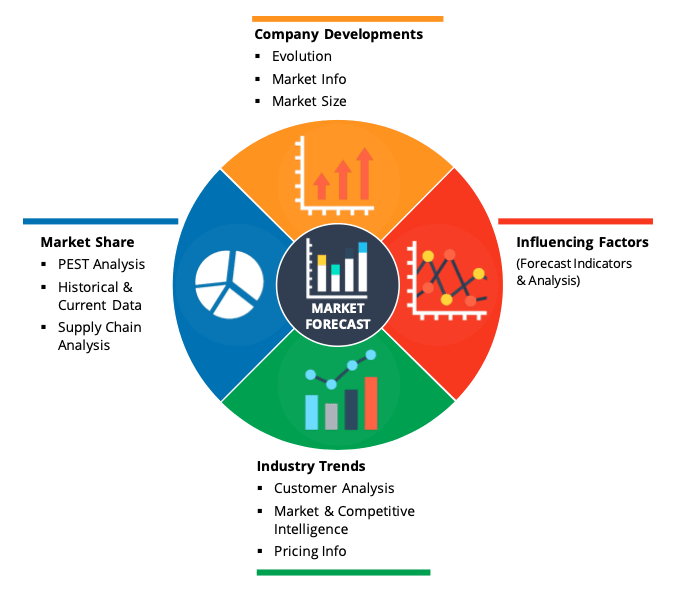LTE IoT Market Overview
The global LTE IoT market is developing because of the growing number of connected devices and the necessity for distinct and well-defined network parameters. Because manufacturing operations are so delicate, companies are turning to IoT wireless connection platforms, sensors, and IoT solutions to increase productivity and transform their operations into smart manufacturing. Many software and solution vendors are offering smart manufacturing solutions that include automated and proactive analytics, changing industrial production into an intelligent and self-managing ecosystem. This factor is expected to drive the global LTE IoT market in the coming years.
LTE IoT is a relatively new technology that is predicted to grow rapidly in the future years. The Internet of Things (IoT) is rapidly evolving, resulting in a strong need for data transit and storage applications. Several industries, including IoT-enabled manufacturing, professional services, telematics, navigation, and infotainment in transportation, are likely to boost the global LTE IoT market's rapid growth. The emergence of linked devices is propelling the LTE IoT market to a considerable extent all around the world.
| Report Metric | Details |
| Market size available for years | 2023–2030 |
| Base year considered | 2023 |
| Forecast period | 2024–2030 |
| Forecast unit | Value (USD Million) |
| Segments covered | Technology, Service, Industry, and Region. |
| Regions covered | North America (the U.S. and Canada), Europe (UK, Germany, France, Italy, Spain, Russia, Rest of Europe), Asia-Pacific (China, India, Japan, Australia, South East Asia, Rest of Asia Pacific), Latin America and the Middle East and Africa (Brazil, Saudi Arabia, UAE, Rest of LAMEA) |
| Companies covered | Vodafone, Telstra, MediaTek, Sierra Wireless, Orange, T-Mobile, PureSoftware, Actility. |
Covid-19 Impact on LTE IoT Market
Like many other industries, COVID-19 badly knocked the electronic and semiconductor industries. This unprecedented event has impacted nearly 230 countries in just a few weeks, resulting in the forced shutdown of manufacturing and transportation activities within and across the countries. This has directly affected the overall sector's growth. It is estimated that COVID-19 to leave more than USD 30 billion impacts on the electronics and semiconductor industry. The sector is majorly affected due to transport restrictions on major electronics and semiconductor raw material providers. However, the emerging need for semiconductors in several industries will offer rapid market recovery over the future period.
LTE IoT Market Segment Overview

Based on Technology, NB-IoT is one of the major segments in the global LTE IoT market. LTE IoT is made up of two main technologies: LTE-M and NB-IoT. The LTE-M is a technology standard for low power wide area networks. It's unique to LTE CatM1, which was created specifically for IoT. By reducing complexity and expanding coverage, LTE-M aims to minimize modem costs while also supporting data integrity and security. NB-IoT increases the spectrum's capacity and efficiency. The global LTE IoT market is predicted to be driven by the rising demand for essential NB-IoT benefits such as extended range, greater network reliability and security, easy deployment, and cost-effectiveness in the future years.
LTE IoT Market, By Technology
· LTE-M
· NB-IoT
LTE IoT Market, By Service
· Professional services
· Managed services
LTE IoT Market, By Industry
· Manufacturing
· Energy and utilities
· Transportation and logistics
· Healthcare
· Agriculture
LTE IoT Market Regional Overview
Region-wise, North America is anticipated to dominate the overall market, throughout the forecast period. IoT and cloud services are increasingly adopted in this area. The Narrowband-IoT market is also benefiting from the growing demand for efficient and low-cost communication technology in the area. Because of the growing use of NB-IoT in the automotive and transportation sectors in the region, the LTE IoT market in Europe is expected to rise steadily. Moreover, the market in the Asia Pacific is expected to grow at considerable rate in the forthcoming years. In Asia-Pacific, the number of government projects for intelligent cities is growing, particularly in India and China. This fact contributes towards the growth of the market in this region.
LTE IoT Market, By Geography
· North America (US & Canada)
· Europe (UK, Germany, France, Italy, Spain, Russia & Rest of Europe)
· Asia-Pacific (Japan, China, India, Australia, & South Korea, & Rest of Asia-Pacific)
· LAMEA (Brazil, Saudi Arabia, UAE & Rest of LAMEA)
LTE IoT Market, Key Players
· Vodafone
· Telstra
· MediaTek
· Sierra Wireless
· Orange
· T-Mobile
· PureSoftware
· Actility
Q1. What are the driving factors for the global LTE IoT market?
The global LTE IoT market is developing because of the growing number of connected devices and the necessity for distinct and well-defined network parameters
Q2. Which Segments are covered in the global LTE IoT market report?
Technology, Service, Industry, and Region. these segments are covered in the global LTE IoT market report.
Q3. Which segment is projected to hold the largest share in the global LTE IoT market?
NB-IoT segment is projected to hold the largest share in the global LTE IoT market.
Q4. Which region holds the largest share in the global LTE IoT market?
North America held the largest share in the global LTE IoT market.
Q5. Which are the prominent players in the global LTE IoT market?
Vodafone, Telstra, MediaTek, Sierra Wireless, Orange, T-Mobile, PureSoftware, Actility. are some key players in the global LTE IoT market.
Data Library Research are conducted by industry experts who offer insight on industry structure, market segmentations technology assessment and competitive landscape (CL), and penetration, as well as on emerging trends. Their analysis is based on primary interviews (~ 80%) and secondary research (~ 20%) as well as years of professional expertise in their respective industries. Adding to this, by analysing historical trends and current market positions, our analysts predict where the market will be headed for the next five years. Furthermore, the varying trends of segment & categories geographically presented are also studied and the estimated based on the primary & secondary research.
In this particular report from the supply side Data Library Research has conducted primary surveys (interviews) with the key level executives (VP, CEO’s, Marketing Director, Business Development Manager and SOFT) of the companies that active & prominent as well as the midsized organization
FIGURE 1: DLR RESEARH PROCESS

Extensive primary research was conducted to gain a deeper insight of the market and industry performance. The analysis is based on both primary and secondary research as well as years of professional expertise in the respective industries.
In addition to analysing current and historical trends, our analysts predict where the market is headed over the next five years.
It varies by segment for these categories geographically presented in the list of market tables. Speaking about this particular report we have conducted primary surveys (interviews) with the key level executives (VP, CEO’s, Marketing Director, Business Development Manager and many more) of the major players active in the market.
Secondary ResearchSecondary research was mainly used to collect and identify information useful for the extensive, technical, market-oriented, and Friend’s study of the Global Extra Neutral Alcohol. It was also used to obtain key information about major players, market classification and segmentation according to the industry trends, geographical markets, and developments related to the market and technology perspectives. For this study, analysts have gathered information from various credible sources, such as annual reports, sec filings, journals, white papers, SOFT presentations, and company web sites.
Market Size EstimationBoth, top-down and bottom-up approaches were used to estimate and validate the size of the Global market and to estimate the size of various other dependent submarkets in the overall Extra Neutral Alcohol. The key players in the market were identified through secondary research and their market contributions in the respective geographies were determined through primary and secondary research.
Forecast Model
